Blog
Welcome to the new blog/blog page. Here I will be highlighting interesting recent images, images from the past that I like, discussing my most recent photographic adventures, or just documenting any issues I think worthy.
Most pictures on the site are available for sale as prints or as images on other merchandise, so don't hesitate to use the Contact Form to get in touch should a photo take your eye. Currently, I'm still researching the best solution, but I will be expanding online store in the near future, so stay tuned for that.
For now, please enjoy the page and make sure you check out the various galleries
All the images posted below will be clickable so that you can see them in a larger size.
Ice Ice Baby
26 September 2022
A range of images from Ottawa winters. Icicles to wildlife.
The cold of an Ottawa winter can be literally bone-chilling. Minus 20C (-4F) is a temperature beyond knowing of most Australians, but it's a relatively common thermometer reading from December to March in Ontario. In the ten years I lived there, the lowest I saw was -35C (-31F). I think I stayed inside that day. However, you do learn to cope with such low temperatures and when combined with the snow and ice that can accumulate, it does make for another layer of creativity in photography.
The seasonal conditions also provide two distinct lighting conditions not often encountered at other times of the year. There's the days when the sky is a bright, crystalline blue without a cloud to be seen. Other days may be completely flat and toneless; basically a living black and white landscape with just tones of gray broken by splashes of bright colour. Here's but one example at Brown's Inlet in the Glebe, Ottawa from December, 2009. Admittedly, I did remove what little colour remained in this image, apart from that vibrant yellow of the chairs.

Here is another, although this time I did take the colour completely out and turned the image into a black and white colour-space. To my mind, the flat light strongly suggested such an approach

Ahhh, but those bright blue, much colder days... You can wake up one morning and find abstract icicles handing from the eaves. They are formed when ice or snow is melted by the sun (or a poorly insulated roof) and the water refreezes as it drips off the eave or gutter and is exposed to the cold air.
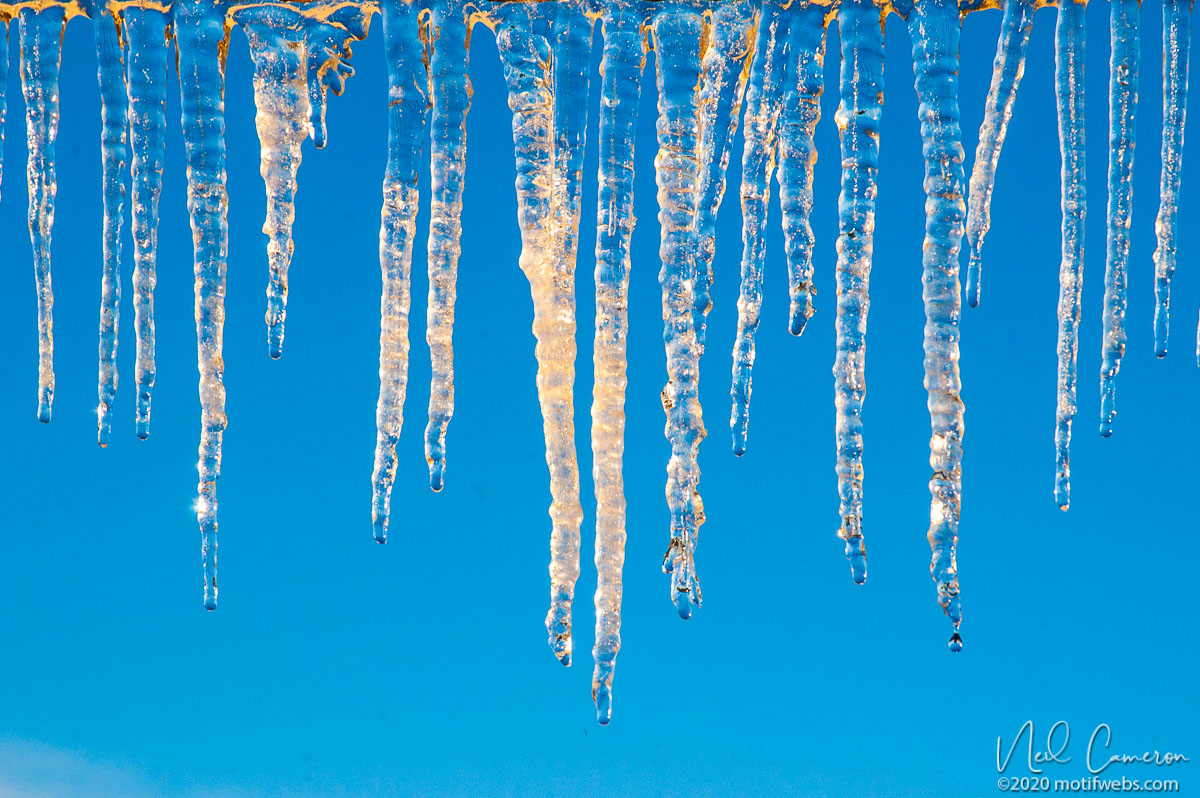
Continuing the theme of the bright blues, there is the aftermath of snow and/or ice storms where the entire world has changed.
When the ice storm is then finished up with a snowfall, it can create another set of photographic possibilities, including providing a gorgeous frame for a Black-capped Chickadee (Poecile atricapillus) at Mud Lake back in January, 2008.
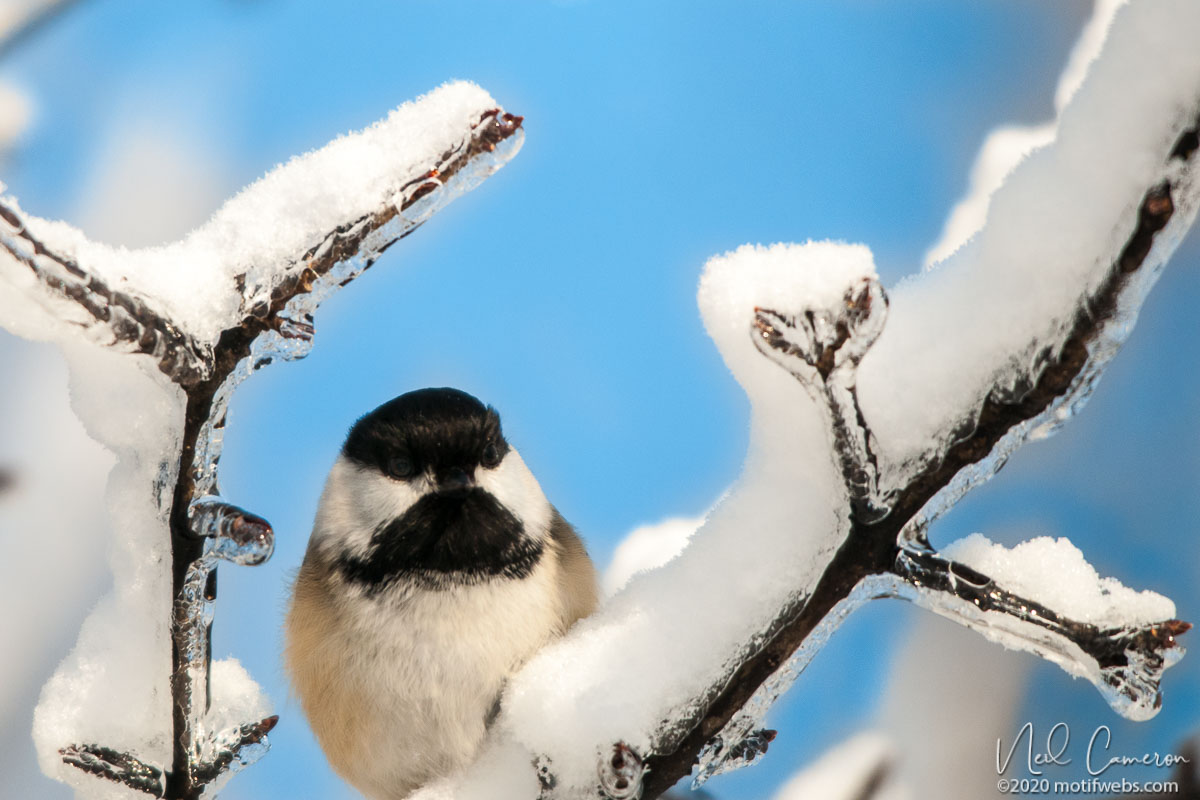
Even without the ice, the heavy snowfalls can obviously provide their own creative additions to images. These cherries, leftover from summer, were taken on the same walk as the yellow chairs above, 15 December, 2009. Sometimes it's the small things that can be visually striking.
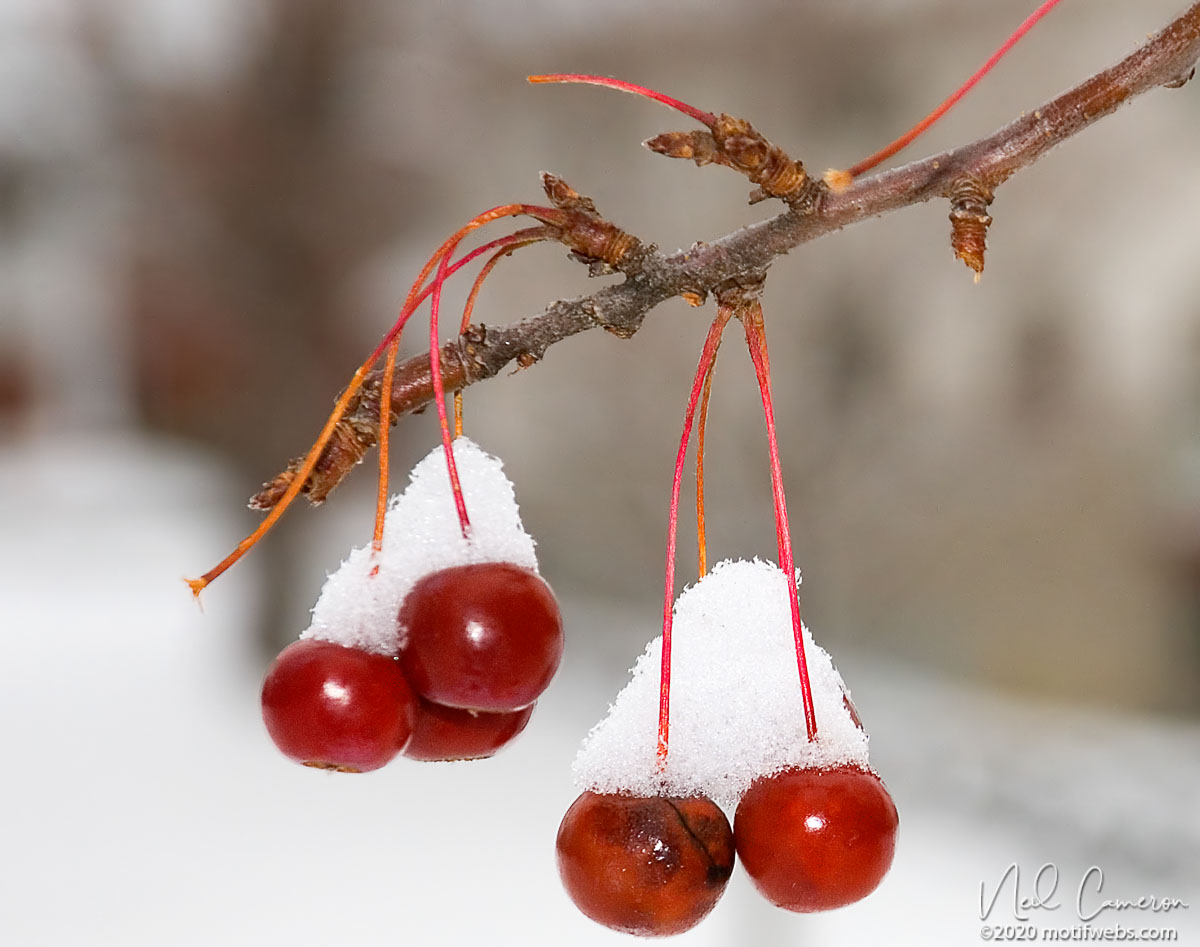
By the same token, this small bush is almost obliterated by the snow at Mud Lake in 2012 and returns us to that flat light/black and white theme.
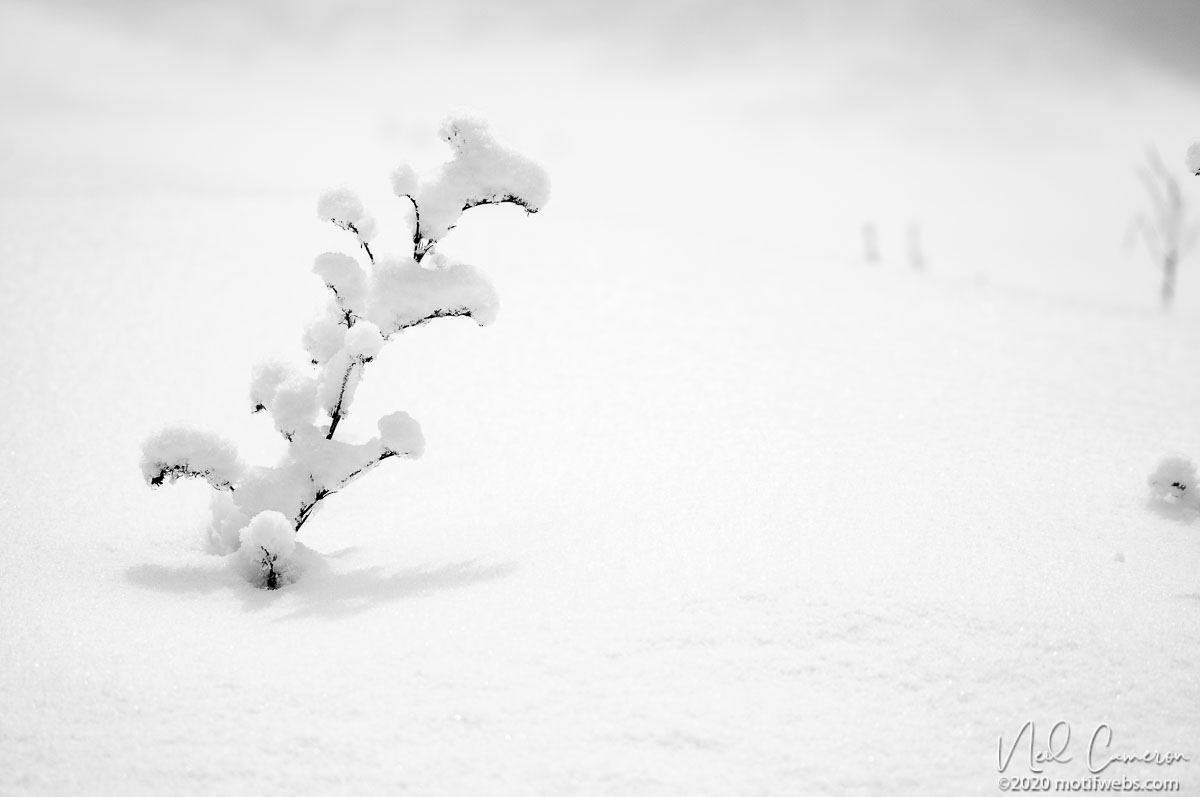
The above image also takes a step towards the abstract, a theme that is also aided and abetted by a Canada winter. I particularly like this one of aspens at Fletcher Wildlife Garden from November 2007. It reminds me a little of an artwork famous in Australia, Jackson Pollock's "Blue Poles".
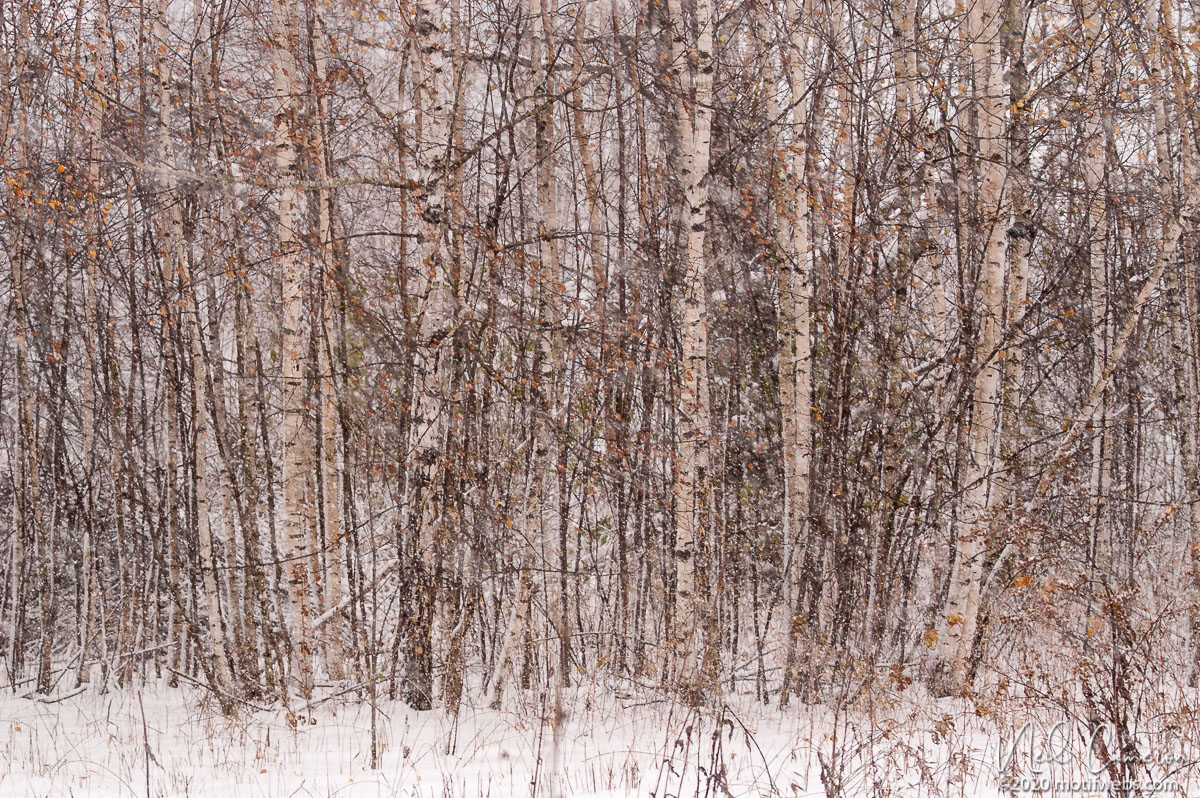
To take the abstraction of an image even further, adding something physical while taking the photograph can give interesting results as well. Here at Hogs Back Falls, during a heavy snowfall, I added in some camera movement.
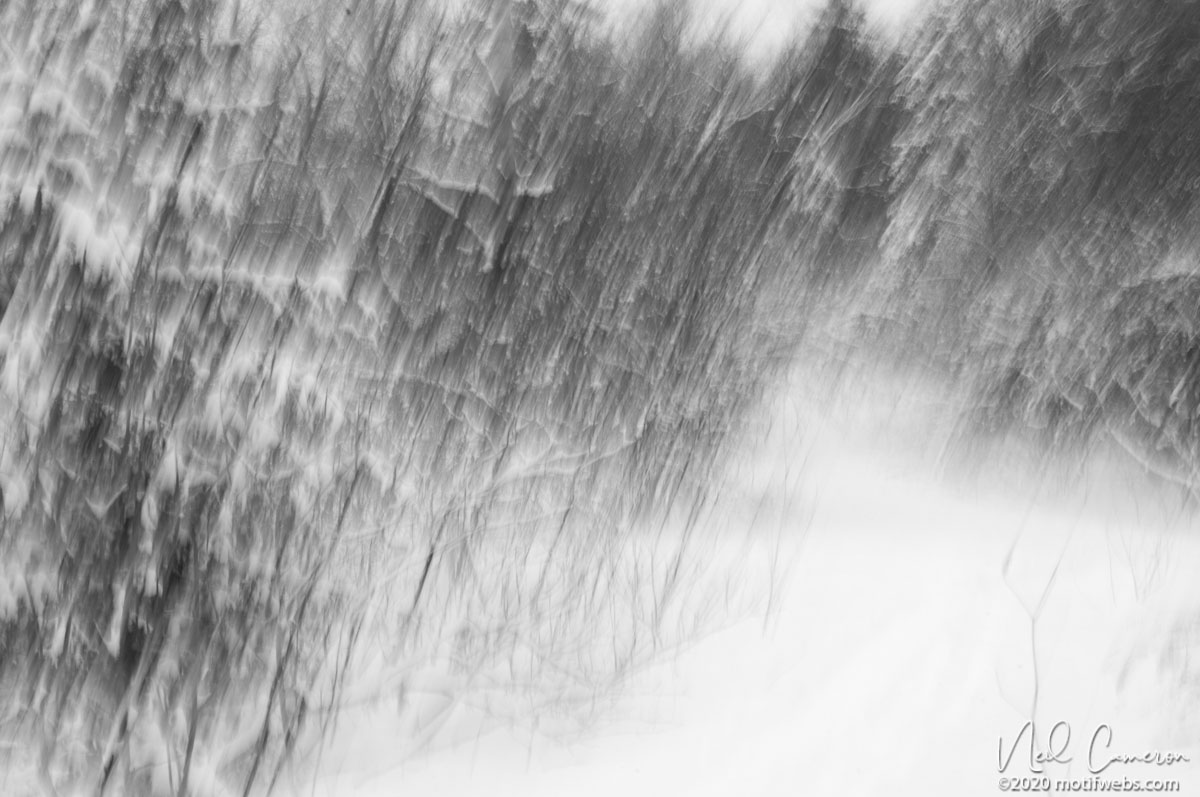
Finally, and while we already touched on it with the Chickadee image earlier, there is the joy of photographing wildlife in the snowy conditions. In some cases, the animals have adapted to an extent that they change with the seasons. Here is an image of an aptly named Snowshoe Hare (Lepus americanus), at Shirleys Bay in December 2007. They are one of those animals that don a white coat for winter and you can see this one has almost completely transitioned from its brown summer regalia. The image also shows the huge paws that help it get around on top of the soft snow that can often prevail.
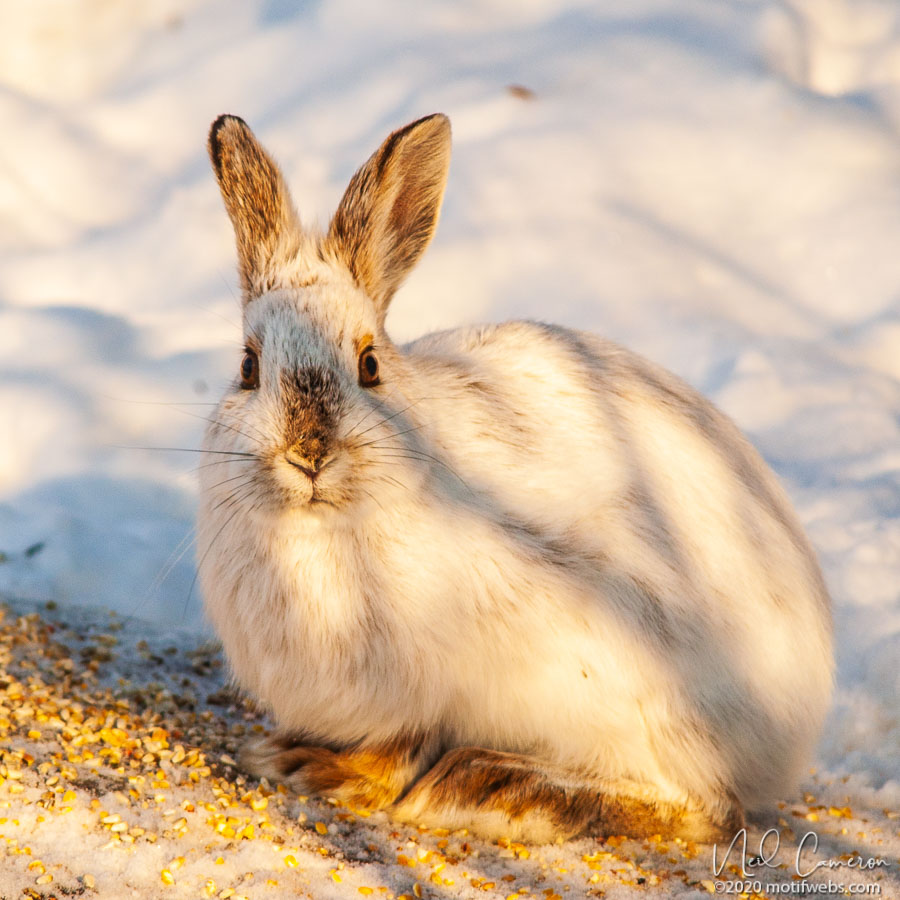
For those of you who have seen this long, photo-heavy post through to its conclusion, myself and this White-tailed Deer (Odocoileus virginianus), also at Shirleys Bay, but this time in January 2010 would like to thank you for your patience and perseverance. Let me know what you think of the result.
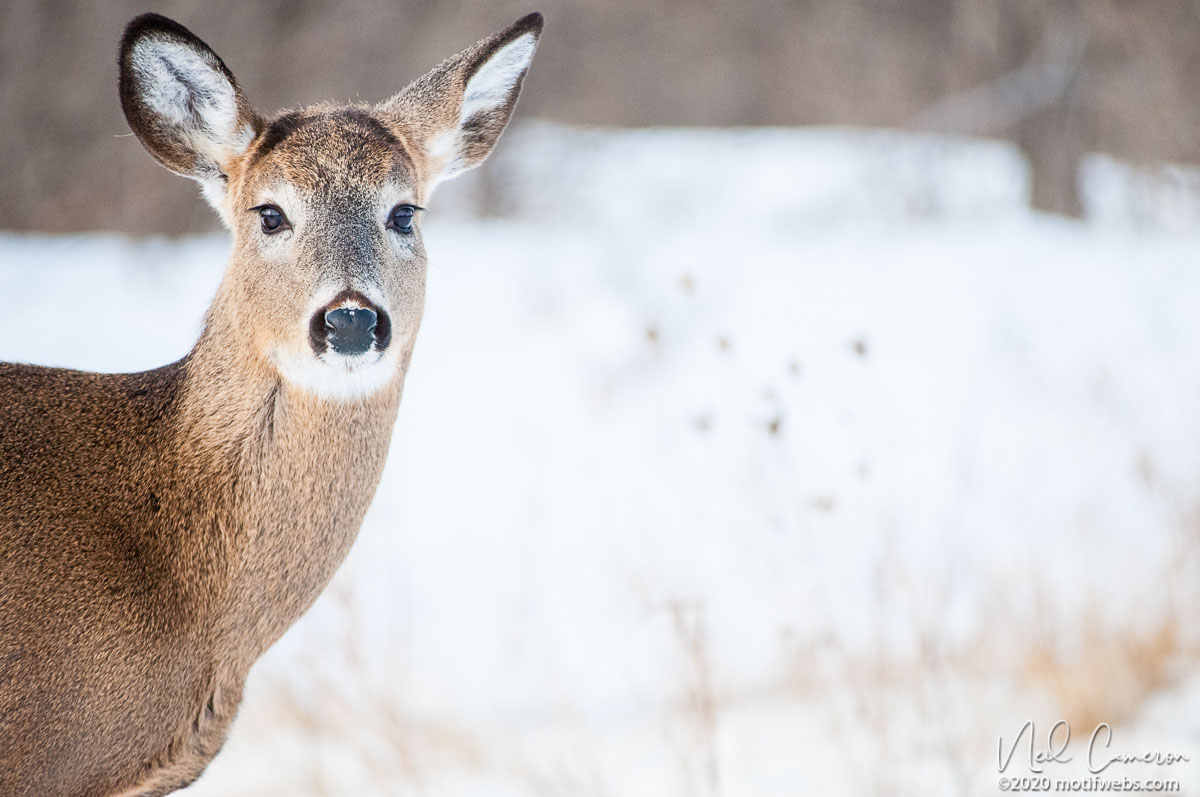
Snuggle Time
24 September 2022
Bonded pairs make for fun images.

It does seem that when some birds pair up they become quite strongly bonded.
As much as I try and avoid being anthropomorphic, it is hard to deny when you see a pair cuddling together. There is an example in the earlier post about the Powerful Owls (Ninox strenua) where the parents are snuggled up close while keeping an eye on their newly fledged chick. And then we have this lovely pair of Little Corellas (Cacatua sanguinea) cuddling close at the University of Queensland Lakes in Brisbane.
But wait, there's more! How about these Galahs (Eolophus roseicapilla) at the Archerfield Wetlands in south-western Brisbane?
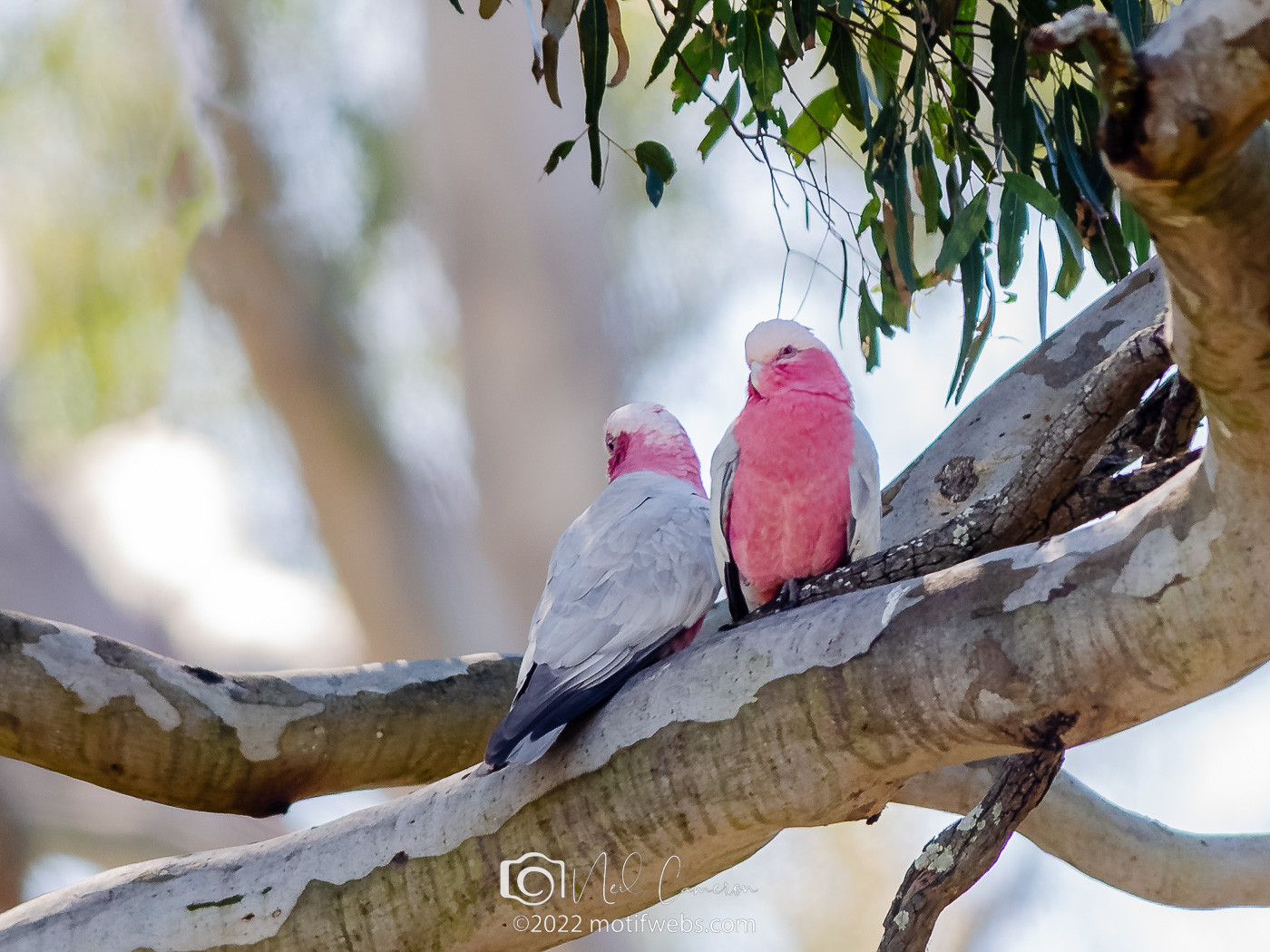
Then there is also this Tawny Frogmouth (Podargus strigoides) pair resident at the Uni of Qld Great Court. Hopefully, they will nest soon. I will go and check on them tomorrow.
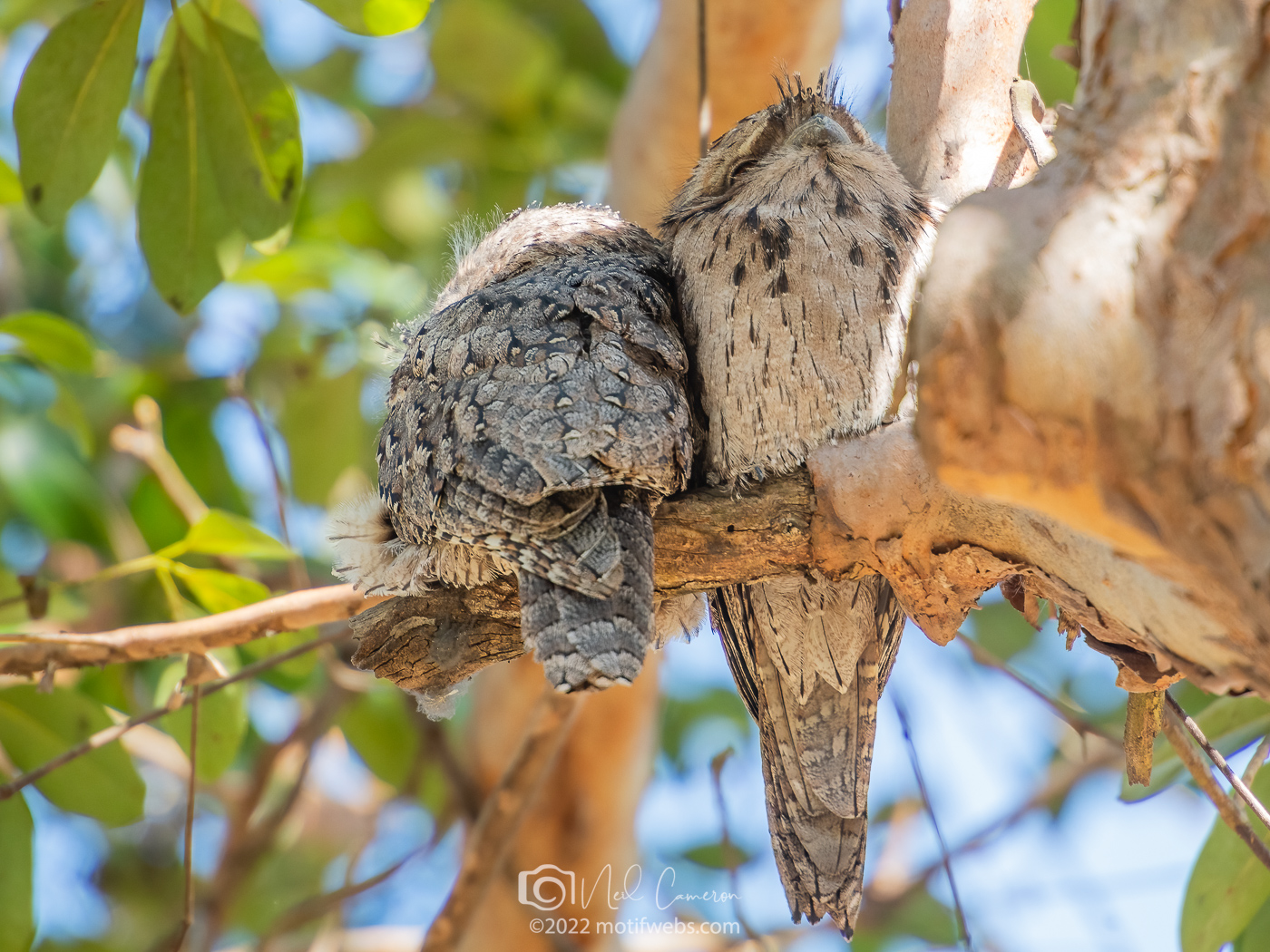
I do find it interesting that all four of the species I have seen doing this have all been somewhat larger birds. Then again that could be down to my less-than-ideal observation skills. No matter whether it's true romance or just basic biology, there is no denying that it is heart-warming when you come across such devotion and bonding in the wild. Even better when I get the chance to photograph them. Hopefully, I come across more species exhibiting the same behaviour.
If you enjoyed this little story then consider signing up to get notified when I make new posts by filling out the subscription form.
Peeking Duck
22 September 2022
An old image that I quite like and why
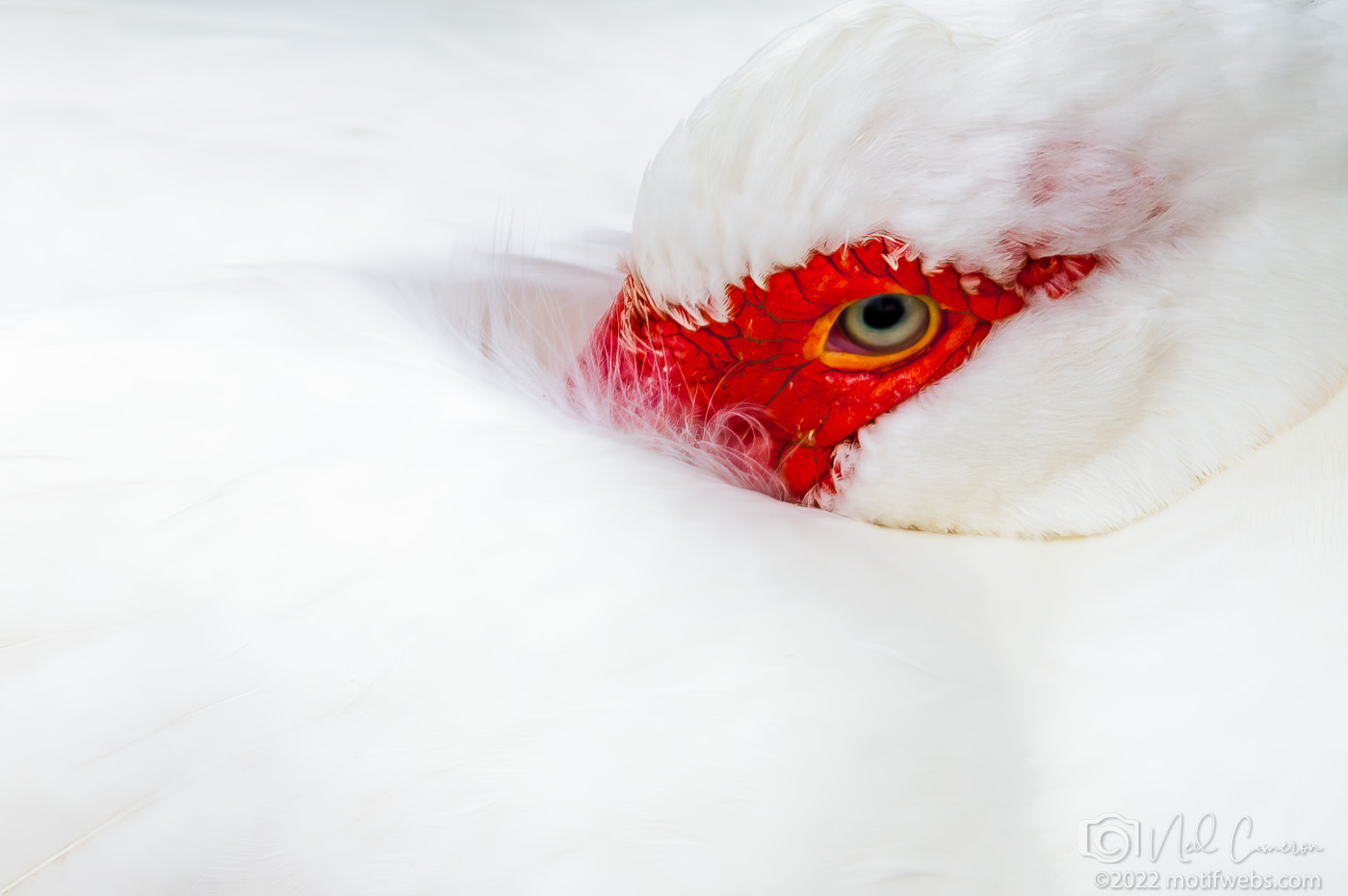
A recent tweet by Andy Pollard, a wildlife guide on the Falkland Islands, reminded of this image. It's an old photo that I have long titled in a terrible pun, "Peeking Duck".
It is a Muscovy Duck (Cairina moschata)that has buried its beak in a sea of white feathers. I love how the white makes the vivid red face and yellow eye-ring even more striking than usual. Then there is the wrinkled, some might say ugly skin with those stray well-defined feathers - like the few remaining hairs on a balding scalp.
Oh and when I say this is an old image, it was taken at Westlake in Santa Cruz, California back on 21 February, 2005. The equipment used was a Nikon D100, my first digital SLR, which I believe I still have, and the long gone 70-300mm kit lens. Being able to still reprocess and enjoy images like this is one of the benefits of having an archive dating back so far.
The Beauty that is a Rainbow Bee-eater
20 September, 2022
And a Rainbow Lorikeet.
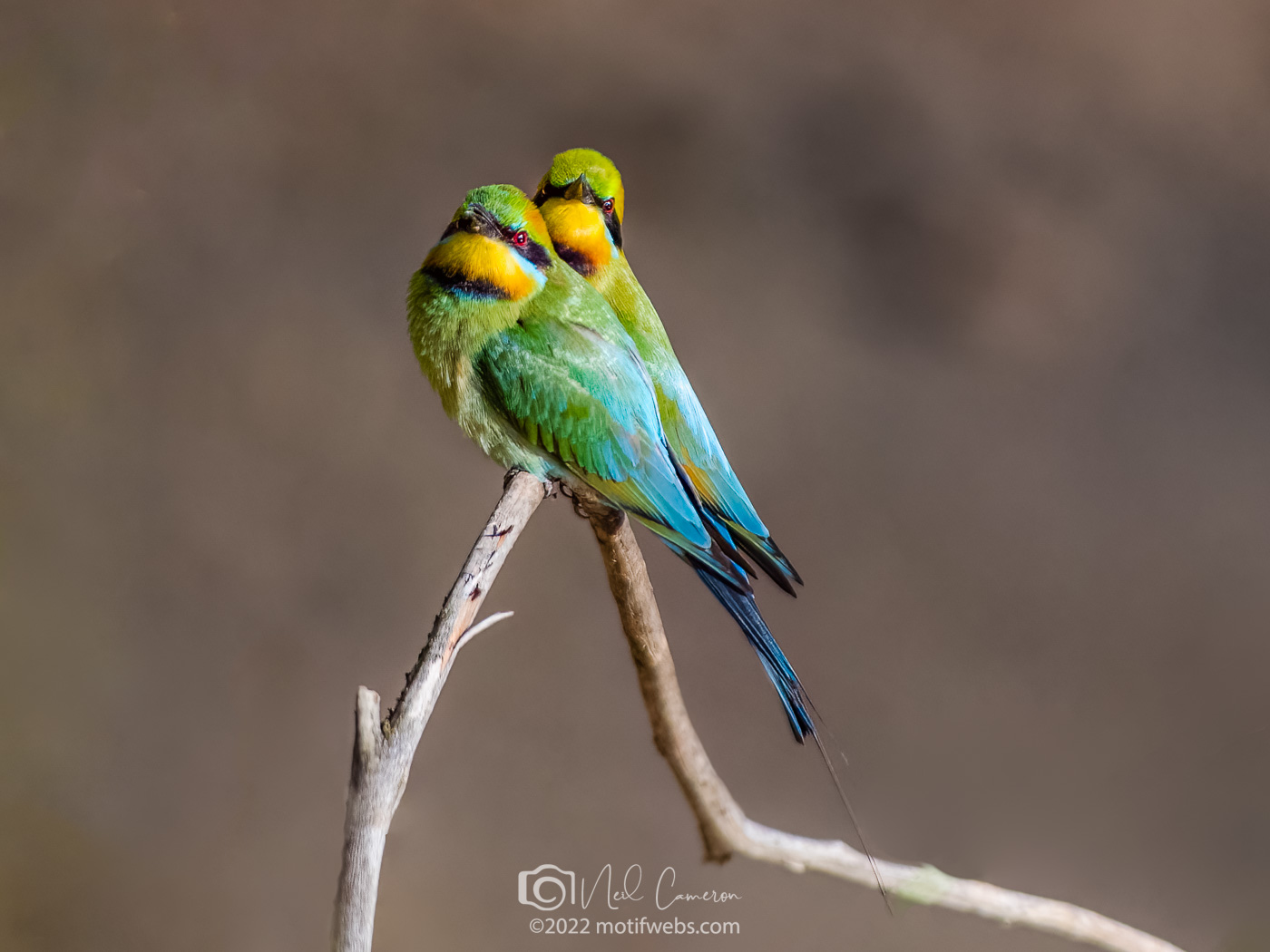
Or in this case a lovely pair of them. The male is the one with the longer tail streamers.
There's no denying that the Rainbow Bee-eater (Merops ornatus) is one of those spectacularly coloured birds so often found in Australia and the tropics. The gorgeous range of colours from greens to golds to oranges to blues to aquas to black to red eyes - it's all just too much really. However, I must admit that you become a little blasé about such vibrancy. After all the larger, similarly garish Rainbow Lorikeet (Trichoglossus moluccanus) is an extremely common bird around here.
So much so that I also encountered them when I went specifically to photograph the bee-eaters at Sir John Chandler Park alongside the Brown Snake, aka the Brisbane River. Of course, I just had to shoot this one with the morning light shining on it as it fed on a crimson flowered Callistemon.
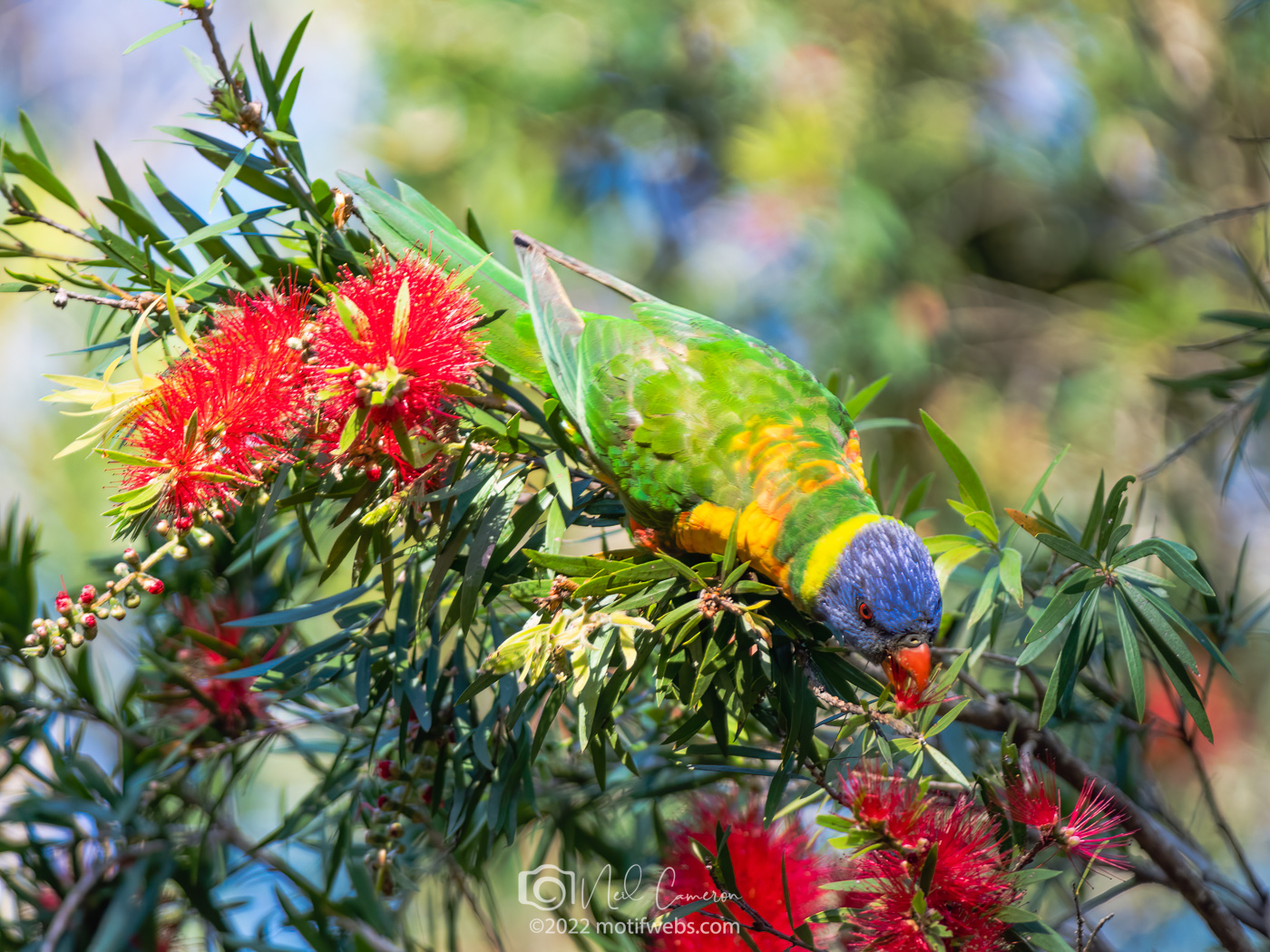
Anyway, I'm drifting off point. One of the many interesting things about Rainbow Bee-eaters is that part of the courtship is the males catch bees and offer them to their desired female. Showy bird, showy gifts. Certainly, it's quite the sight watching them swoop from the perches along the riverside out over the water to catch bees, butterflies and other flying insects. One day, I'll get an image of the bird in-flight...one day.
Speaking of the river, the birds nest in the sandy cliffs of the river bank.
Found throughout most of Australia with the exception of the central deserts and Tasmania, the bird is also kind of/sort of migratory. It is present year round in northern Australia, with the Brisbane population remaining year-round residents, but only a summer visitor to southern Australia. The southern birds head north to over-winter in northern Australia, Indonesia, and southern New Guinea.
All in all, one of Brisbane's iconic birds, the beautiful Rainbow Bee-eater. And let's close with an image taken in the soft light of an overcast morning with the bird set against the backdrop of The Brown Snake, aka the Brisbane River.
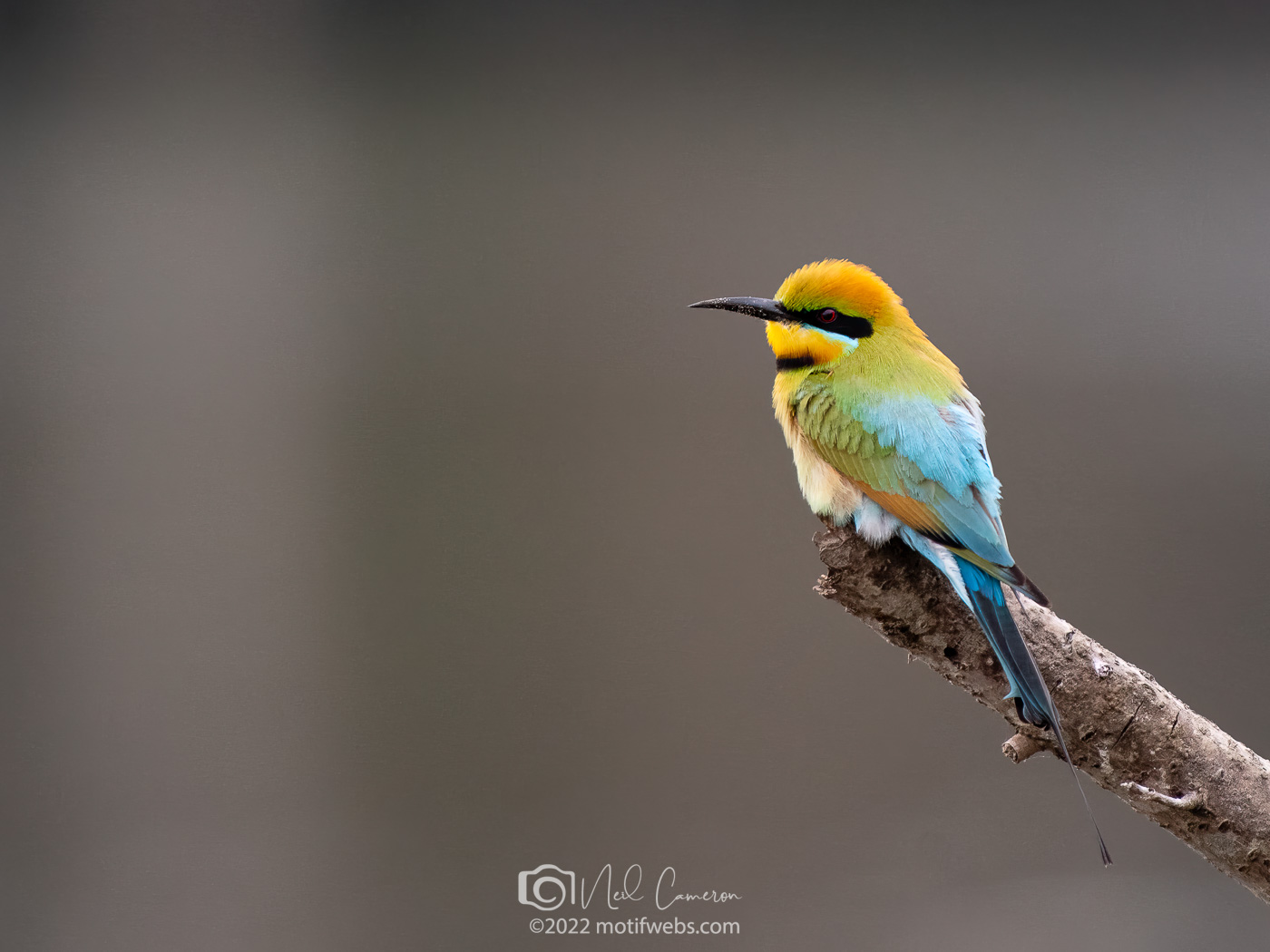
They'rree Baaaackk
19 September 2022
A fledgling Powerful Owl and its parents.
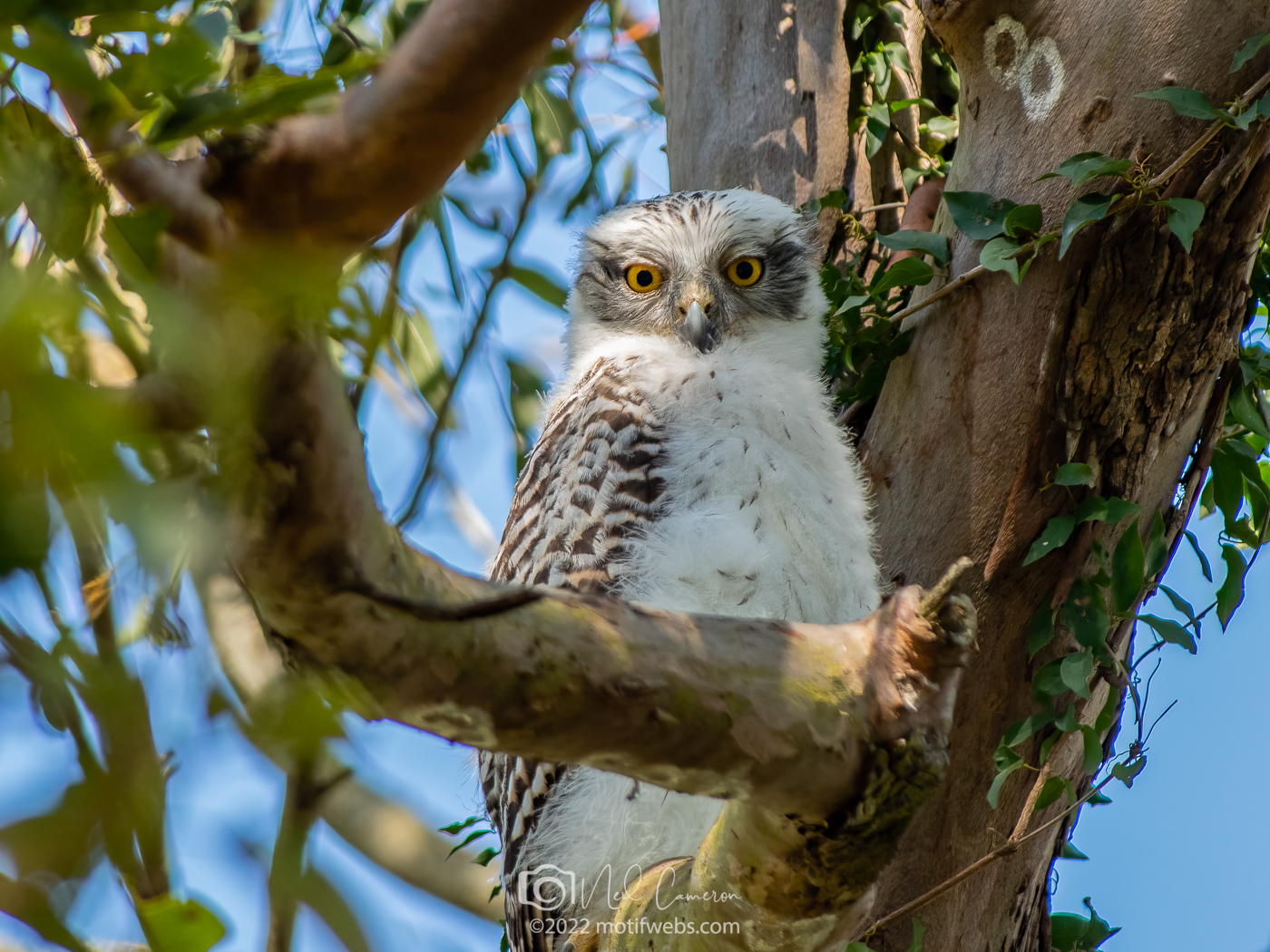
The long-awaited local Powerful Owl (Ninox strenua) chick has fledged and is now fluffily staring down at it's admirers with curious contempt.
The parents are close by and as can be seen in the image were basically cuddled up with each other, while keeping a close eye on both the chick and the photographer. I don't think I'd like to get on their bad side after having seen what they do to possums and fruit bats.

Hopefully this year the POwl trio won't be mobbed with photographers and onlookers, but I suspect once the word's out (and the location is guessed at) then it may all get a bit busy again. Still I really can't blame people for wanting to see and photograph such a beautiful bird, and why should that pleasure only remain with those who are in the know. A little bit of a quandary really, although one I addressed by keeping my images under-wraps until after the prime observers had released their photographs.
In discussion with them, their tactics had been that after the fledgling first emerged from it's nesting hollow on Thursday evening, they'd keep quiet about it until Monday to prevent a frenzied weekend. I had no problem with that approach and kept my Sunday images to myself.
One of Those Days
19 September 2022
A trip to photograph shorebirds had mixed results. One lifer though.
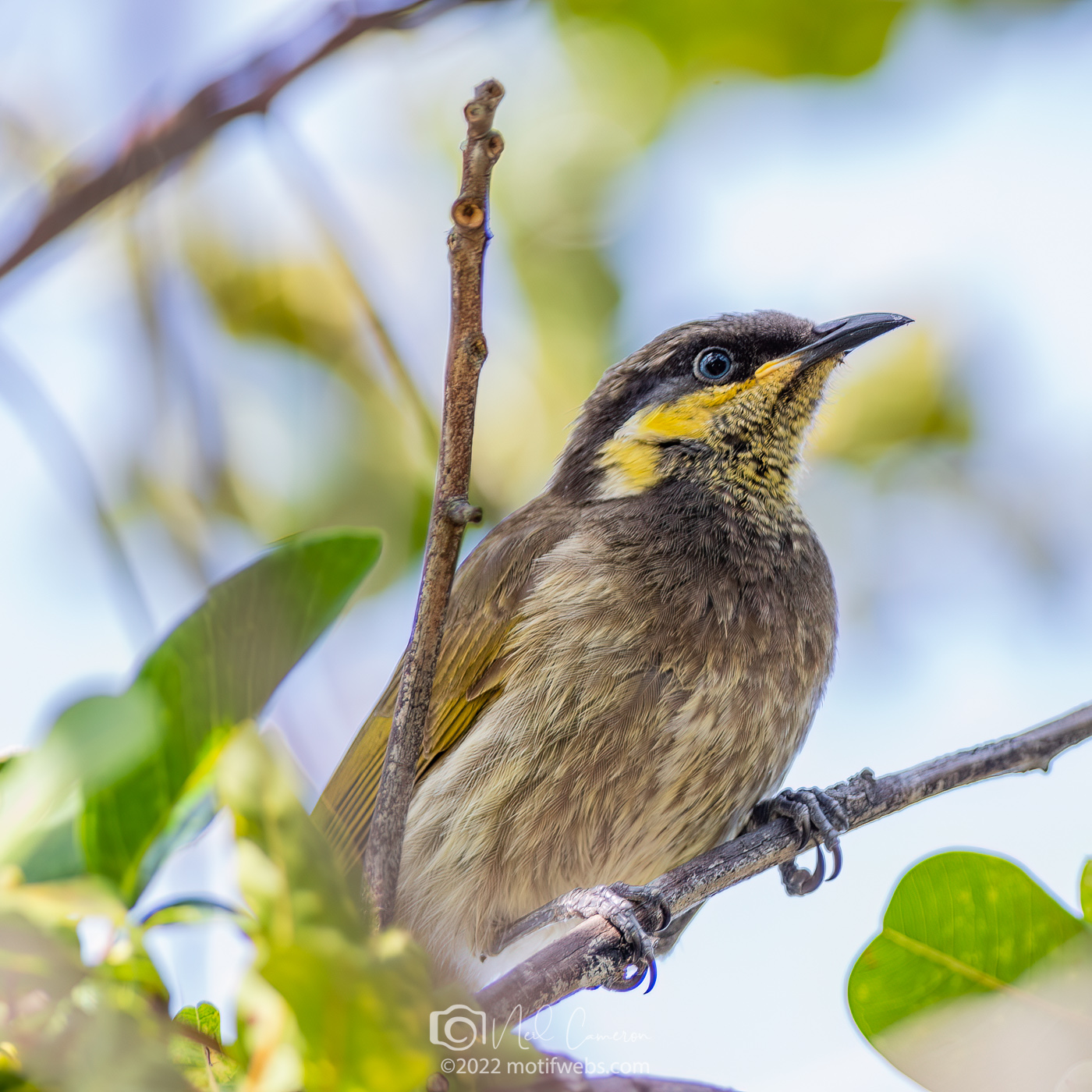
Thought I'd go and shoot shorebirds this morning, and so off to Toondah Boat Ramp I drive...
And all I got was this, admittedly lovely, Mangrove Honeyeater (Gavicalis fasciogularis). Just the one, just the one single shot. I pressed the shutter release three whole times. I took three shots. One was accidental; one I missed focus; the last one worked.
The closest I got to seeing a 'shorebird' was a White Ibis on top of a street lamp in the parking lot. I didn't bother taking a picture. Not ONE real shorebird! Buggers are supposed to be streaming back in. And I drove about 45mins in both directions for this opportunity...
However, I did see a lot of crows in the parking lot. We all know what sound crows make, "FAARRRKKKKKKK!' Sums it up really.
In truth it really was piss poor planning on my part. I should have checked the birding websites/Facebook groups to see the locations the shorebirds are most likely to be at and had some fallback locations to try as well.
Still it was lovely weather and I did end up with a nice shot of a lifer.